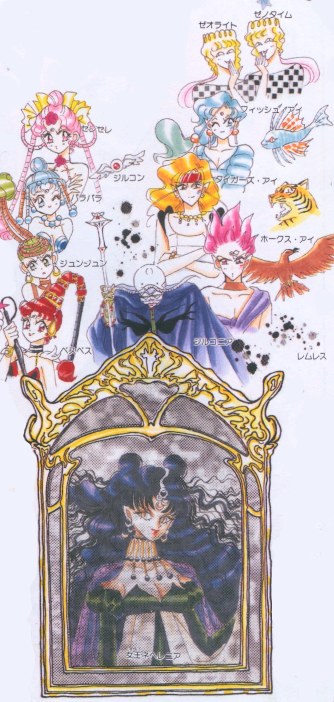Sean here. Today we have a guest post by one of the more popular Sailor Moon fanfiction authors, John Walter Biles. John has been writing Sailor Moon fanfiction for over 15 years now. His most acclaimed stories include the epic Sailor Moon Z and the Arthurian pastiche A Tokyo Senshi in Queen Rei’s Court. John’s stories can be found at his website. Here he discusses in depth something I touched on in my villains essay: the differences between the manga and its anime, and how this affects Sailor Moon fandom.
It cannot be denied that the Sailor Moon manga is better paced than the animation. This is not unusual; even poorly paced manga tend to be outrun by any attempt to animate it at the same time the manga is coming out. Any fan of Japanese animation based on manga soon comes to expect the many tricks used by animated series in order to avoid having to pass the point the manga has reached.
Further, the Sailor Moon manga is tightly paced, especially in comparison to a lot of other manga in which people fight each other or monsters. Compare the disasterous spiral of bloat of the Bleach manga in the Hueco Mundo arc to any of the major manga arcs. (If you enjoy pain, anyway). Each arc lasted roughly a year of real time, setting up a set of interconnected conflicts, resolving them by the end. Indeed, with only 52 chapters, many foes die by the end of the chapter they first appear in.
The strength of this is that you end up with something which is complete in itself, doesn’t wander all over the place, and which does not contain any wastes of time. From a perspective of purely reading,
this is a definite strength.
But we live in an age in which reading (or in the case of TV, watching) is not the only use of media. Increasingly, many fans want to engage with media at a deeper level, whether arguing about the story’s direction on a mailing list or discussion board or Twitter, creating fan art, writing fan-stories, making music videos or other forms of secondary creation. Modern technology greatly facilitates this.
Ironically, for this purpose, the flaws of the animated versions of many manga become strengths. The more holes they are, the more space there is for secondary creators. It’s the series which are problematic which tend to attract the most fan writers, whether to fix the holes or to exploit the additional plotlines which have to be added. There is enough framework for a common fandom and enough room for improvement to inspire people to do so.
The massive army of Sailor Moon fanfics attests to this phenomenon. The flawed structure of the anime opens more room for fanfic, which is among the reasons there are more fanfics based on it than the manga. The fact that in the US, most people have not actually seen all of the anime contributes to this as well, leaving the series essentially open-ended for them (like, for example, Ranma One-Half, another series which launched a thousand fanfics).
Naru, for example, who is ephemeral in the manga, is given enough coverage in the anime’s first season to become a substantial character, then fades away as the show progresses. For many people, this does not please them, leading to a small army of stories about her, whether to make her a senshi, or just to preserve her friendship with Usagi instead of her fading away. (I plead guilty as one of those people, in my fanfic Sailor Moon Z.)
Thus, for those inclined to use a work as a basis for building their own story, something flawed and sprawling may well open doors for their own creativity. Which is not to say I wish Naoko Takeuchi had churned out a never-ending mess like the Bleach manga has become. Frankly, a lot of modern manga authors should be sat down and forced to read something with good pacing.
But the dual existence of the anime and the manga means we can have our cake and eat it too in this regard, having one version of the story to spark creativity especially well and one to deliver a tighter version of the tale for reading enjoyment.



